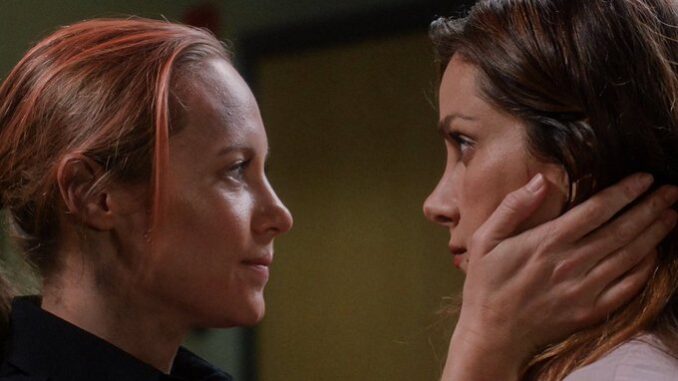
When Station 19 and Grey's Anatomy Collide: The Crossover Everyone Is Talking About
In the sprawling, emotionally charged universe of Shonda Rhimes, few phenomena ignite fan excitement and narrative complexity quite like the regular, often breathtaking, crossovers between Grey's Anatomy and its fiery spin-off, Station 19. What began as a strategic move to connect two shows set in the same Seattle landscape has evolved into a narrative cornerstone, a thrilling dance between medicine and mayhem that deepens character arcs, amplifies stakes, and creates an unparalleled viewing experience. When Grey Sloan Memorial Hospital and Station 19 collide, it’s not just a crossover; it’s an event, a testament to the power of interconnected storytelling that genuinely has everyone talking.
At its core, the appeal of these collisions lies in their organic genesis. Station 19 was born from Grey's Anatomy, with beloved character Ben Warren trading his surgical scrubs for a firefighter’s turnout gear. This foundational link established a natural pipeline for interaction. It made perfect sense that firefighters would bring their injured to Grey Sloan, and equally plausible that medical emergencies could escalate into situations requiring the immediate intervention of first responders. The shared geographical setting and the inherent symbiotic relationship between medical professionals and firefighters meant that these crossovers were never forced; they were simply an extension of the logical reality of a crisis.
Beyond mere logistical convenience, the crossovers serve as powerful engines for character development. Seeing familiar faces navigate unfamiliar territory, or watching beloved characters from both series seamlessly interweave, adds profound layers to their personal journeys. Consider Miranda Bailey, whose ever-present anxiety for her husband, Ben, becomes a visceral and relatable fear every time he heads into a blaze. Her visits to Station 19 or the sight of him being wheeled into her ER are not just plot points; they are raw explorations of love, fear, and the sacrifices inherent in a life dedicated to saving others. Similarly, characters like Carina DeLuca, whose relationship with Station 19’s Maya Bishop blossoms across both series, gain depth and dimension that would be impossible in a single-show vacuum. We witness their vulnerabilities, their strengths, and their everyday lives in a richer, more holistic way.
This narrative synergy also serves to exponentially amplify stakes. When a catastrophic event—be it a massive car pile-up, a gas explosion, or a building collapse—requires the coordinated efforts of both Seattle’s bravest and its most brilliant doctors, the sense of urgency becomes palpable. The viewing experience transforms from watching two separate dramas into witnessing a sprawling, multi-faceted emergency that feels intensely real. Characters from both shows face peril, and the audience understands that no one is truly safe. This collaborative storytelling ensures that the tension is relentlessly high, and the emotional payoff, whether in triumph or tragedy, is profoundly impactful. The narrative isn't just a linear progression; it's a dynamic, unpredictable tapestry where the threads of heroism, sacrifice, and survival are woven tighter than ever before.
And then, there's the sheer joy and anticipation for the fans. Social media lights up with theories, predictions, and fervent reactions every time a crossover is announced or aired. The ability to see characters from one’s favorite show interacting with those from another, sharing inside jokes, or collaborating on life-or-death missions, fosters a unique sense of community and excitement. It’s like a grand, shared universe sandbox where beloved toys get to play together. This interactive element transforms passive viewing into an engaged, collective experience, making the crossovers not just episodes, but cultural moments that fuel discussions and deepen the overall fan investment in the Shondaland canon.
In essence, the collision of Station 19 and Grey's Anatomy is far more than a clever scheduling trick or a ratings grab. It is a fundamental evolution of serialized television, demonstrating how interconnected narratives can enrich character, elevate suspense, and profoundly resonate with an audience. It’s a bold declaration that in a world where medical emergencies often begin with a siren and end with a scalpel, the most compelling stories are those told from every angle, by every hero, in a universe where every life saved is a testament to shared courage. And as long as there are fires to fight and lives to save in Seattle, the crossover everyone is talking about will continue to be the pulse of both these beloved shows.
